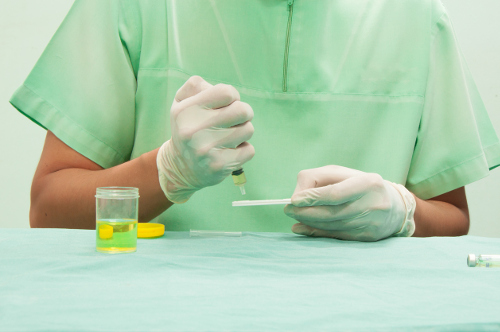 We all know that the color of our urine can be a guide to possible underlying health conditions.
We all know that the color of our urine can be a guide to possible underlying health conditions.
Perhaps this is why we seek advice when the usual pale yellow shade suddenly turns dark yellow, brown, blue, or red. Most times this can be linked to something we have consumed, whether it is food, drink, or medication.
But what if you see green urine in the toilet bowl? Let’s learn about this rare but possible occurrence and the causes of green urine.
What Does It Mean?
Before we continue, let’s understand what green urine means. Our urine is naturally yellow due to the contents of electrolytes, macronutrients, vitamins, and other micronutrients. The coloring is dependent on the amount of urobilin, or urochrome, which is the result of the bilirubin in the bloodstream. This bilirubin is produced by the breakdown of the red blood cells and is usually contained within the bile of the stool. If some of the bilirubin is reabsorbed into the bloodstream, it escapes in the urine.
The yellow coloring may change to green as a result of existing health conditions, medication, or dyes in our food products. Green urine coloring is a rare condition.
Possible Causes of Green Urine
Because green urine is itself a symptom, it is usually accompanied by other symptoms depending on the associated condition. It can vary from light green urine to lime green urine and, in some cases, even neon green urine. Green urine is sometimes seen with the use of the orange dye fluorescein, which is generally used for diagnostic testing. We have the answers to what causes green urine and possible other symptoms to watch for.
1. Vitamins
We require a minimum amount of essential nutrients for good health. An overload of some vitamins may cause reactions in our body. Green urine is one reaction linked to an overabundance of vitamins as our body works to get rid of the excess. A bright green hue may indicate an overload of B vitamins. This may occur with the use of vitamin supplements and overconsumption of B vitamins in our food.
2. Food and Beverages
Those with children know that when a baby’s stool changes in color, it is usually due to the previous night’s supper. This is as true with our stool and urine outputs at any age. The most common cause of green urine is the dye ingredient in foods and beverages we have consumed. When this happens, the dye is either green or blue (blue dye and yellow urine produce a shade of green). While dyes most often cause the notable discoloration of urine, it can also result from natural coloring such as with asparagus.
The only clues to indicate that the green urine derives from what we’ve ingested are smell with asparagus or the color of the drink or beverage as with green beer. No treatment is needed as it will pass through your system, and the urine will return to its regular color.
3. Bladder and Kidney Infections
Bladder and kidney infections can present green urine mainly due to bacterial urinary tract infections (UTIs). These are more common in women. Infections spread to the bladder after entrance through the urethra. If the infection continues, it may move to the kidneys. Infections here can also travel to other parts of the body through the bloodstream.
Symptoms that may, or may not, be present with these infections include difficulty urinating, a burning sensation, strong urine odor, pain, or urinating frequently. Most bladder and kidney infections require medical assistance if antibiotics are needed.
4. Prostate Gland Infection
Men have a prostate gland under the bladder that, when inflamed, may be linked to a bacterial infection known as prostatitis. It can be acute or chronic. This is commonly seen in men under the age of 50. An infection, pelvic injury, or a sexually transmitted disease can lead to green discharge.
Accompanying symptoms of acute prostatitis may be urination problems, while chronic cases may, or may not, have symptoms. Signs to watch for include blood in semen, pain with ejaculation, or testicular pain. Prescribed medication may be required through your medical doctor.
5. Drugs
As with food and beverages, the green coloring in urine can be caused by either the chemical compounds in a certain medication or the combination of various medications. Although green urine is infrequent, it can often be seen with the use of cancer drugs, tricyclic antidepressants, hypnotics, and even nonsteroidal anti-inflammatory drugs. It can also occur with drugs used for blood disorders.
Depending on the drug, the green urine can be one of several symptoms or may be the only symptom. If green urine is present due to a medication, it will dissipate once the drug therapy is done.
The sight of green urine in the toilet can be frightening, especially because it is so unusual. The underlying cause can usually be traced to a particular food, beverage, existing health condition, or other ingestible substance such as prescribed medication. Because of this, most cases of green urine settle naturally subside when the underlying cause is treated. That being said, if green urine is present with a high fever, severe progressive pain, or bleeding, you should seek immediate medical advice.
Related:
Sources
“Green Urine,” Red Urine; http://www.redurine.com/urine_color/green_urine.html, last accessed May 24, 2017.
